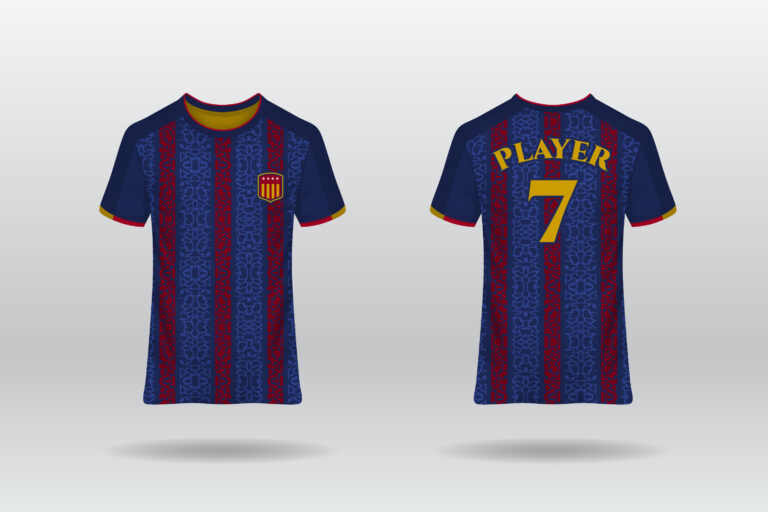Football Fashion: Where Streetwear Meets the Game
Football has always been more than ninety minutes on a pitch. It’s culture, identity, and for many, it’s a way of life. Nowhere is this more evident than in the growing fusion between football and streetwear. What began as a casual admiration of team gear outside of matchday has evolved into a global movement. Football fashion is no longer just about jerseys and cleats; it’s about style that travels from terraces to city streets.
You see it in the way fans dress on their way to the stadium. You feel it in the collaborations between major fashion brands and legendary clubs. And you can’t ignore how footballers themselves, once confined to the role of athletes, now shape trends and break style norms across social media and fashion weeks. Football fashion has become a bridge between performance and self-expression, and today, it’s one of the most dynamic forces in global sports culture.
What sparked this crossover? How did dressing for the game become just as important as the game itself? It all began with a mix of loyalty, flair, and a growing awareness that what you wear as a fan or a player can say just as much about you as the badge on your chest.
The Roots of Style on the Terraces
Before the hashtags, fashion week invites, and sneaker drops, football fashion started with the fans. In the 1980s, UK terrace culture gave birth to the casual movement. Supporters, particularly in England and Scotland, wore designer labels, like Stone Island, Lacoste, and Fred Perry, not just to stand out but to fly under the radar during away matches. These clothes weren’t just stylish, they were a form of identity and tribal allegiance.
The movement soon became synonymous with a unique, understated form of fashion. Clean trainers, sports jackets, slim-fit jeans, this was the early DNA of what we now recognize as football fashion. It wasn’t about replicating what the players wore; it was about having your own edge, your own presence.
That sense of self-styled confidence still lingers in how fans dress today. Whether it’s an old-school track jacket or a scarf worn with street clothes, the terraces have always been the birthplace of football’s relationship with fashion.
Footballers as Style Icons
Modern footballers have redefined what it means to be a sports icon. No longer confined to the pitch, many of them double as fashion influencers and ambassadors. Think of players like Hector Bellerín, Serge Gnabry, or Jude Bellingham. Their off-pitch wardrobes command attention. Their collaborations with brands like Prada, Dior, and Louis Vuitton show just how seriously the fashion world takes them.
But it’s not just the elite stars in Europe’s top leagues. Even players from lesser-known clubs understand the power of presentation. Dressing well is no longer seen as a distraction, it’s a brand, a statement, a form of self-respect.
The accessibility of social media has only amplified this. A pre-match walk from the team bus to the locker room has become a personal runway. Outfits are captured, dissected, and admired. In many ways, a player’s style can earn them as much attention as their performance in the game. Football fashion, through their lens, has elevated to new heights.
The Influence of Jersey Culture
Jerseys, once confined to matchday, have exploded into the world of fashion. They are now collectibles, everyday wear, and even runway staples. Retro kits from the ’90s, Italy’s 1994 shirt, Nigeria’s 1998 beauty, or any number of classic Premier League designs, are worn not just by fans but by musicians, influencers, and fashion heads.
The appeal is simple. Jerseys are lightweight, graphically bold, and inherently nostalgic. Each one tells a story, of a player, a tournament, a time in life. When styled with jeans or layered under a hoodie, they become timeless pieces that blur the lines between fandom and fashion.
This has given rise to limited-edition drops, fashion collabs, and streetwear-inspired kit launches. Whether it’s PSG teaming up with Jordan Brand or Arsenal linking up with adidas and retro designers, the football shirt is no longer just for game day, it’s for every day.
Streetwear Brands Enter the Game
As football fashion gained global traction, streetwear brands saw an opportunity. Labels like Off-White, Supreme, and Palace have all flirted with football aesthetics, drawing inspiration from kits, training gear, and even boot designs. Meanwhile, sportswear giants like Nike and adidas began elevating their football lines to match the style of their streetwear counterparts.
The crossover isn’t one-way either. Football clubs are now commissioning designers to create third kits, warm-up gear, and travel collections that appeal to fashion-conscious fans. These are not mere rebrands, they are cultural statements, aimed at fans who want more than just to support; they want to wear their loyalty like fashion armor.
You don’t have to be on the pitch to wear football-inspired gear anymore. Capsule collections, limited-edition tracksuits, high-top sneakers inspired by boot molds, it’s all part of the same aesthetic. Streetwear and football are no longer separate spheres; they move as one.
Boot Culture and the Sneakerhead Connection
Boots are the footballer’s tool of trade, but their influence has seeped into street style as well. Classic silos like the Nike Mercurial, adidas Predator, and Puma King have inspired generations of sneaker designs. Some players even sign deals that blend their boot lines with casual footwear, allowing fans to wear a bit of pitch heritage on their feet.
Sneaker culture in football fashion is real. Trainers released by players or clubs now sell out as quickly as Yeezys. Limited colorways, player exclusives, and team-branded versions have created a niche market of football sneakerheads.
This evolution from on-pitch to pavement further blurs the boundaries of what counts as football gear. Lacing up a pair of Samba sneakers or retro Copa Mundials isn’t just about comfort, it’s about making a statement that connects the street to the stadium.
Music, Identity, and the Rise of Global Football Fashion
From grime to reggaeton, from drill to hip-hop, music has always had its fingerprints all over fashion. And football is deeply woven into that fabric. Artists like Stormzy, Bad Bunny, and Central Cee regularly appear in club jerseys or football-inspired streetwear. Their influence pulls fans into the aesthetic even if they don’t follow the sport.
This crossover has elevated football fashion into global relevance. The diaspora around football, African nations, South American cities, European capitals, have all contributed to a melting pot of style. It’s no longer just about club affiliation; it’s about what the culture around football feels like. Tracksuits from Congo, jerseys from Buenos Aires, bucket hats from London, it’s a worldwide wardrobe now.
Football fashion is expressive, and thanks to music and multicultural influence, it reflects more than loyalty, it reflects identity.
Women’s Football and Fashion Innovation
The women’s game has brought a new wave of energy into football fashion. Brands and clubs are recognizing the need for inclusive, stylish, and diverse clothing that reflects modern sensibilities. The result? Tailored jerseys, unisex drops, and off-pitch collections that appeal to wider audiences.
Players like Megan Rapinoe, Leah Williamson, and Asisat Oshoala are not just athletes, they’re fashion voices. They’ve partnered with brands to release collections that are both performance-ready and socially aware.
This movement has also pushed clubs to think beyond the traditional. From bespoke capsule collections to runway appearances, women’s football is helping shape a more inclusive, fashion-forward football culture.
Where It’s Headed: The Future of Football Fashion
Football fashion is not slowing down. The next frontier lies in sustainability, techwear, and even virtual fashion. Clubs and brands are experimenting with recycled materials, carbon-neutral collections, and NFTs for digital kits. It’s a brave new world, and football is taking the leap.
Tech collaborations might soon bring smart fabrics and performance fashion into everyday wear. From moisture-wicking travel jackets to temperature-controlled street kits, fashion inspired by football could soon be practical as well as stylish.
What remains constant is the emotional pull. Whether you’re in Tokyo, Lagos, São Paulo, or Berlin, when you see someone in a kit or crest, you feel that instant connection. That’s the heart of football fashion, it unites. And it’s never looked better.
Conclusion
Football fashion is more than a trend, it’s a revolution. It fuses loyalty with individuality, club culture with street identity, and athletic wear with creative expression. From the terraces of the 1980s to today’s global collaborations, the journey has been organic but unstoppable.
Whether it’s a vintage jersey, a fresh pair of boots, or a streetwear capsule that nods to your favorite club, football fashion allows you to wear the game with pride. It’s not just what you wear to the stadium, it’s what you wear to represent who you are.
In the intersection of sport and style, one thing is clear: football fashion isn’t just here to stay. It’s still evolving, and everyone’s watching.







